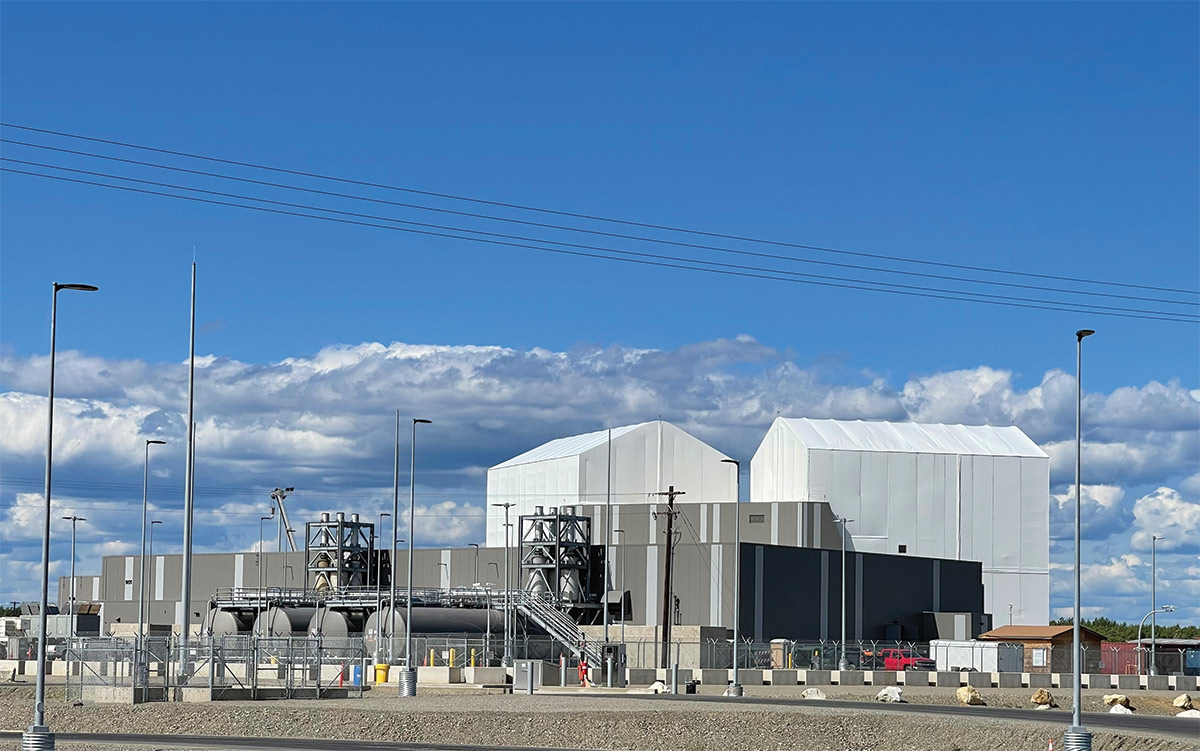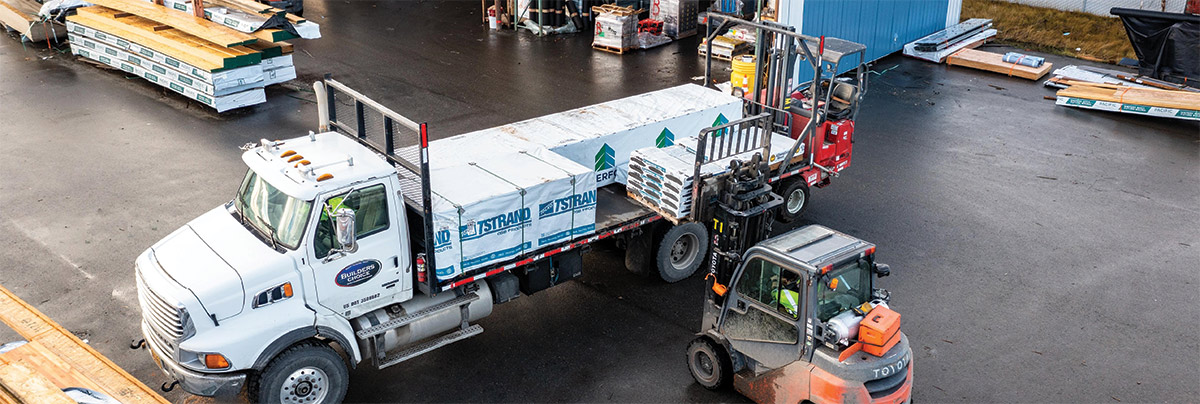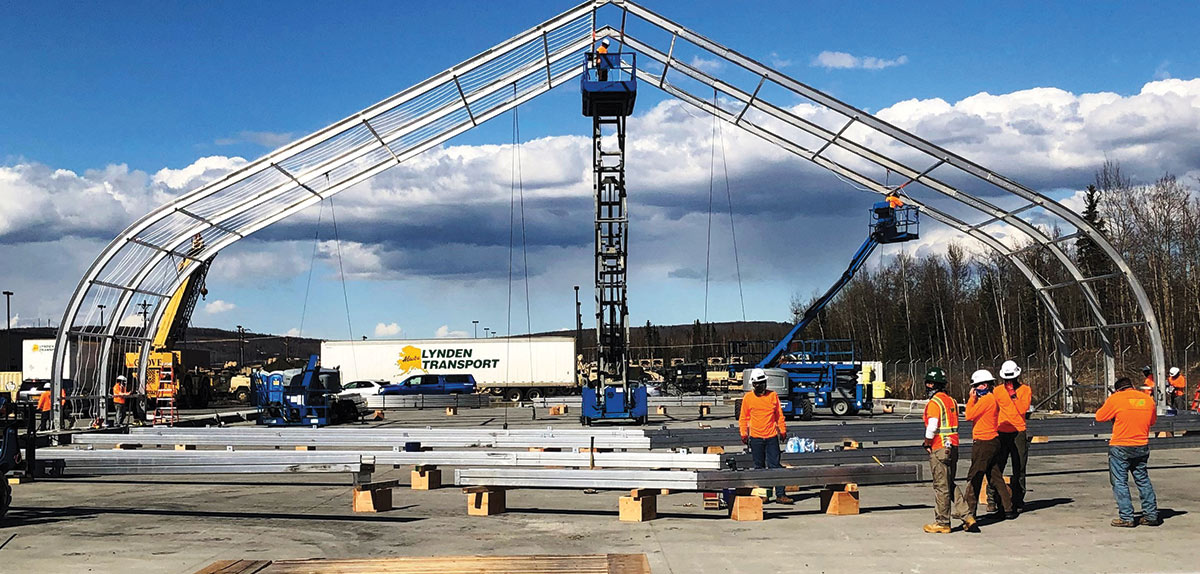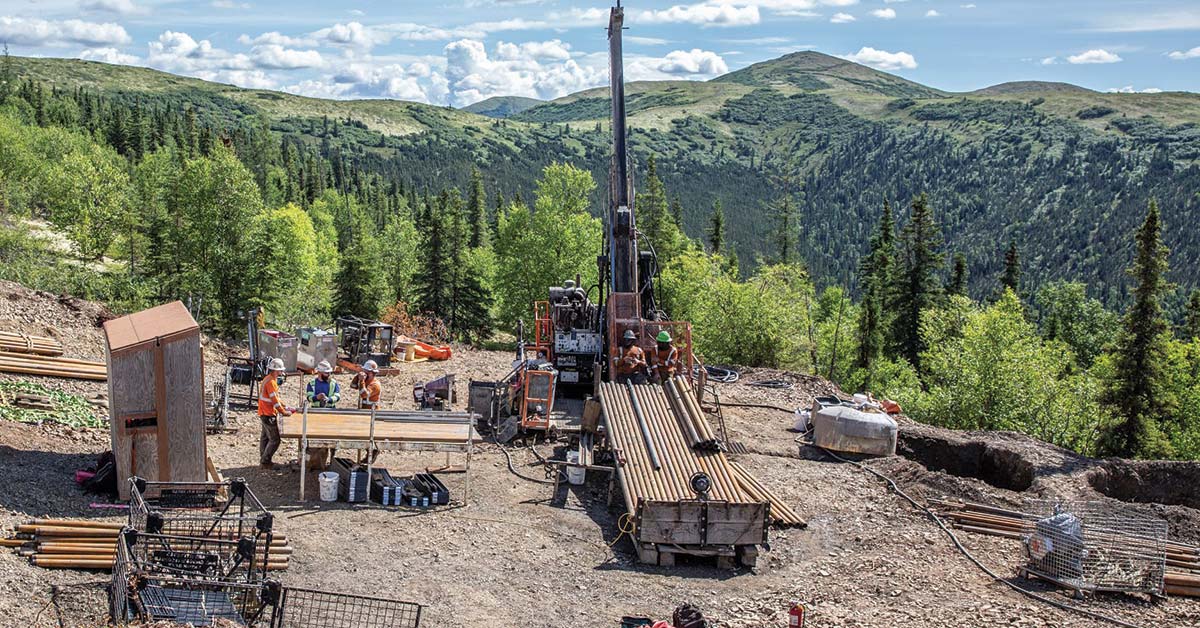laska Native corporations are tied to the land in a very tangible sense. All twelve of the Alaska Native Claims Settlement Act (ANCSA) regional corporations own companies that move the earth, lay foundations, erect structures, or provide construction materials. Construction is just one flake in a blizzard of business activities, but it is an important one. There are millions of dollars to be made in private sector building projects, plus billions more in public works.
Today, ASRC operates six business segments: government services, energy support services, industrial services, petroleum refining and marketing, construction, and resource development.
ASRC Construction is a holding company that operates six companies, most of which contract directly with the state, federal government, and private clients. The group includes: ASRC Civil Construction, ASRC Earthworks, ASRC SKW Eskimos, ASRC Builders, ASRC Prime Constructors, and Builders Choice Lumber.
ASRC Construction Director of Operations Paul Kari says the six companies offer a variety of talents, allowing ASRC to pursue a wide range of opportunities.
“There aren’t many projects that come out to bid that we don’t take a look at, that we don’t have some ability to navigate,” Kari says. “In the last twenty-two years we played a part in the F-22 buildout [at Joint Base Elmendorf-Richardson], pursued the F-35 [at Eielson Air Force Base] and the LRDR [Long Range Discrimination Radar]; we pursued for both vertical and civil, both in the 8(a) and competitive market. We’ve been involved in the ebb and flow of state projects.”
ASRC Construction built a fuel storage vault at the Long Range Discrimination Radar power plant at Clear Space Force Station, a US Army Corps of Engineers and US Department of Defense project.
ASRC Construction
ASRC Construction

“We’re less afraid of the bigger opportunities out there,” he says. “As you gain experience over time, you get more comfortable.”
It can be difficult to grow a company and keep it right-sized for current needs. Kari attributes ASRC’s success to stability among ASRC leaders.
“We’ve obviously grown as it comes to the size of the projects and the team in general; a lot of that has been due to the stability that ASRC has provided,” he says. “Leading management has not been terribly reactive; they put good leaders in place and let them lead. We’re not just trying to grow for growth’s sake but to maintain the opportunities that we have.”
ASRC employed 14,030 people in 2021, of which 2,905 worked in Alaska. Within its ASRC Construction business line, Kari says the companies peak out at about 500 seasonal employees, with between 200 and 300 year-round, not including subcontractors.
“That’s more than doubled in the last twenty years, in terms of our maximum staffing; that mirrors the growth in our revenue,” Kari says.
“The Alaska construction market provides stable opportunities; our focus is performing well for our core clients while keeping an eye on the right opportunities outside of the state,” Kari says.
ASRC’s construction companies are currently working on a variety of jobs: Village Safe Water projects; finishing a school construction project in Aniak; working on the Bettles, Ekwok, and New Stuyahok airports; renovating the historic World War II era Fort Wainwright Hangar 1; and completing seismic upgrades at the historic Fort Wainwright chapel.
ASRC’s relationship with its shareholders goes beyond that of a typical business/shareholder relationship.
The lumber distributor Builders Choice is one of six companies in the ASRC Construction family.
ASRC Construction
ASRC Construction

Kari explains that the company also strives to hire locally when it works in remote areas. Sometimes that means hiring ASRC shareholders in non-ASRC villages. Often it means hiring people in the village in which the project is happening regardless of shareholder status.
“We understand that the more of that we leave in the community, inherently it is more successful for us. Some [we have hired] have joined us and continued outside that opportunity and found a new career,” Kari says.
Arctic Slope Regional Corporation recently built a new playground at the school in Tuntutuliak.
ASRC Construction

ASRC Construction
Also on the roster is Bristol Bay Industrial, which engages in construction operations through its member companies in Alaska and the Lower 48, including oilfield-related work in Kenai, Valdez, and on the North Slope. BBNC also owns Alaska Directional Drilling, and it recently acquired GHEMM Company, a Fairbanks general contractor.
Alaska Directional Drilling recently completed laying a 300-mile fiber-optic cable network called AlCan ONE between the Canadian border and North Pole. GHEMM Company recently secured a $20 million project to build a 51,000-square-foot transit garage in Fairbanks for the Fairbanks North Star Borough.
The Alaska Directional Drilling and GHEMM Company purchases are a strategic effort to recognize companies that are already at the head of their field, says Scott Torrison, chief operating officer for BBNC.
A barge is loaded with cargo, including trucks and equipment, to be delivered to Wales, the westernmost mainland city in the United States.
ASRC Construction

ASRC Construction
It supports BBNC’s overall mission to benefit shareholders and add to the economic capacity of Bristol Bay.
“Our policy is ‘steady and increasing,’” Torrison says. “If you were a shareholder, you can count on quarterly dividend payments that are likely to increase each year.”
Hiring shareholders is part of the overall picture, he says, but it doesn’t only mean hiring them at BBNC companies.
“Some shareholders want to work for us, some want to do other things. We do what we can to support shareholders in whatever career direction they want,” Torrison explains.
Bristol workers place rip rap along the shoreline of Lake Andrew in Adak to protect the South Davis Road landfill from erosion.
Bristol Alliance of Companies
Bristol Alliance of Companies

“We do construction, whether it’s vertical or civil; we do environmental investigations and remediation; we do logistics—marine logistics, and we have Yukon Equipment, which is a heavy equipment sales and rental company,” says says Sam Brice, holding line president.
Brice says approximately 70 percent of their operations are in Alaska and 30 percent are Outside.
“It’s diversification for when Alaska is in a down state, like the last few years, with oil being down and the pandemic—it’s slow,” Brice says.
Bristol Bay Native Corporation’s SES Group of Companies provided design-build services for 250,000 square feet of new Sprung structures at Fort Wainwright. The project included ten structures providing heated space for the Stryker Brigade to maintain and operate critical equipment, plus two new combat readiness training facilities for Brigade personnel.
SES Group of Companies

SES Group of Companies

Nine of the eleven Calista Brice companies have thick portfolios of Alaska work. Brice Inc. is working on several rural airports for the Alaska Department of Transportation & Public Facilities and aims to finish Emmonak’s city dock this year, Brice says. The company is also working to deliver aggregates and building materials to thirteen villages this summer for the Association of Village Council Presidents Rural Housing Authority.
Brice Environmental is working on projects on Shemya Island for the US Army Corps of Engineers–Alaska Division and for Raytheon, which operates an L-Band radar site at Shemya’s Eareckson Air Station. Brice Environmental and Brice Civil are both supporting the activities of Donlin Gold project, where there is ongoing drilling this summer. Brice Builders is busily upgrading grounding systems at eleven remote radar sites across Alaska.
Meanwhile, STG Pacific is working on a $10 million joint venture project with Davis Constructors & Engineers to build a new Lake Hood hangar for the US Fish & Wildlife Service. STG this summer finished installing 1,200 steel pilings at the Nome Airport to help stave off runway settlement, a project on which STG was a subcontractor to Knik Construction. STG also subcontracted work to install new pilings for a hotel in Bethel.
Calista subsidiary Brice Inc. is building a dock for the City of Emmonak.
Calista
Calista

Calista Brice employed about 650 people in the second quarter, a number Brice expected to rise in the third quarter. About 10 percent of Calista Brice employees are Calista shareholders; another 6 to 7 percent are shareholders in other Alaska Native corporations.
Brice Civil and Brice Environmental, both 8(a)-certified spinoffs of Calista Brice, supported this season’s exploration for Donlin Gold on land where Calista owns part of the mineral rights.
Calista
Calista

Calista’s spring distribution is based on shareholder equity, which is basically the net worth of its business. Its Akilista distribution, generally distributed in November, is based on Calista’s investment portfolio, which is not dependent on business performance.
STG, which specializes in operating cranes and laying foundations, installed 1,200 pilings at the Nome Airport this summer.
Calista
Calista

Across the board, Calista is gearing up for the Donlin gold project, which it hopes will be as successful to the regional native corporation as the Red Dog Mine in Kotzebue, on land owned by the NANA Regional Corporation.
For a hotel being built in Bethel, STG applied its expertise in pilings as a subcontractor.
Calista
Calista
